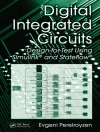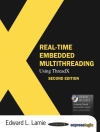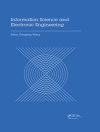Harvesting kinetic energy is a good opportunity to power wireless sensor in a vibratory environment. Besides classical methods based on electromagnetic and piezoelectric mechanisms, electrostatic transduction has a great perspective in particular when dealing with small devices based on MEMS technology. This book describes in detail the principle of such capacitive Kinetic Energy Harvesters based on a spring-mass system. Specific points related to the design and operation of kinetic energy harvesters (KEHs) with a capacitive interface are presented in detail: advanced studies on their nonlinear features, typical conditioning circuits and practical MEMS fabrication.
Содержание
1. Introduction to kinetic energy harvesting for smallsystems
a) Why do we need KEH?
b) Typical mechanical sources and applications
c) Principle of a KEH
2. The harvester’s mechanical part
a) Linear vs nonlinear mechanical resonators
b) Mechanical nonlinearities induced by large displacements
c) Mechanical nonlinearities induced by the multi-mass contactand impacts
3. The electrostatic transduction mechanism for KEH
a) Overview of the most common transduction mechanisms
b) Specificities of the electrostatic transduction for KEH?
c) A practical design and analysis tool: the QVdiagram
d) The electrostatic spring softening
4. Conditioning circuits for e-KEH
a) The different family of conditioning circuits
b) Details on the simplest conditioning circuit
c) Controlling the electrostatic force to get smart CC
d) Conditioning circuits for transducers with electret
5. Device Engineering
a) MEMS fabrication technology
b) Geometries of realistic devices
c) Electrical frequency up conversion and velocityamplification
d) Implementation of electret layer
6. Overview of advanced nonlinear dynamics effects
a) Perturbation techniques nonlinear VEH analysis
b) Qualitative methods for analysis of nonlinearity in KEHs.
c) Behaviour of nonlinear oscillators. Anharmonicoscillations.
7. Overview of advanced conditioning circuits andelectronics
a) Practical implementation of CC and the problems related totheir implementation
b) Charge pump conditioning circuit with adaptive features
c) Review of existing implementation
d) Interface with a load
Об авторе
Philippe Basset, Associate professor at Université Paris-Est, ESYCOM, ESIEE Paris, France
Dimitri Galayko, associate professor at Sorbonne Universités, UPMC Univ., Paris, France
Elena Blokhina, research manager at School of Electrical, Electronic and Communications Engineering, University College Dublin, Ireland












